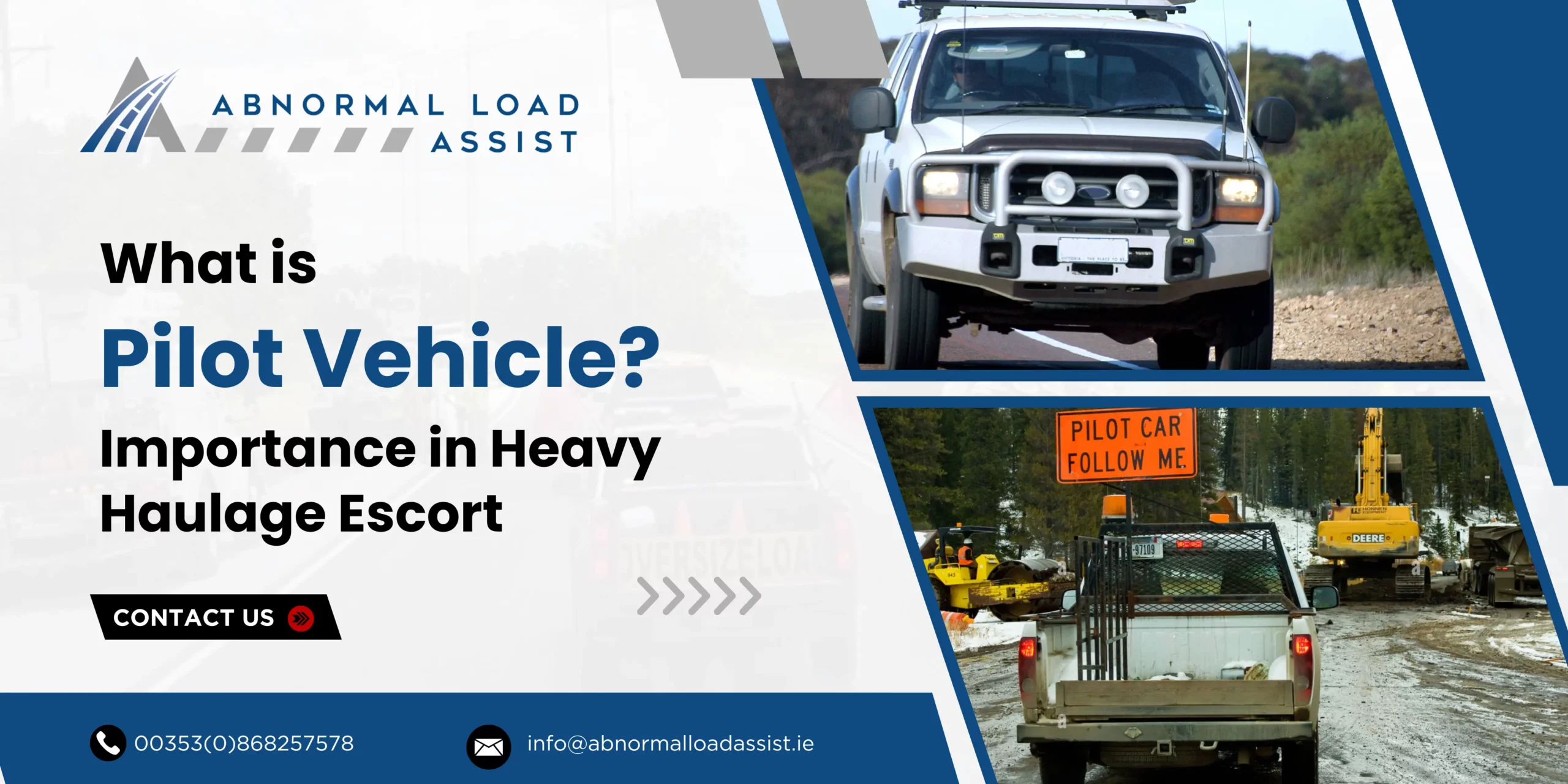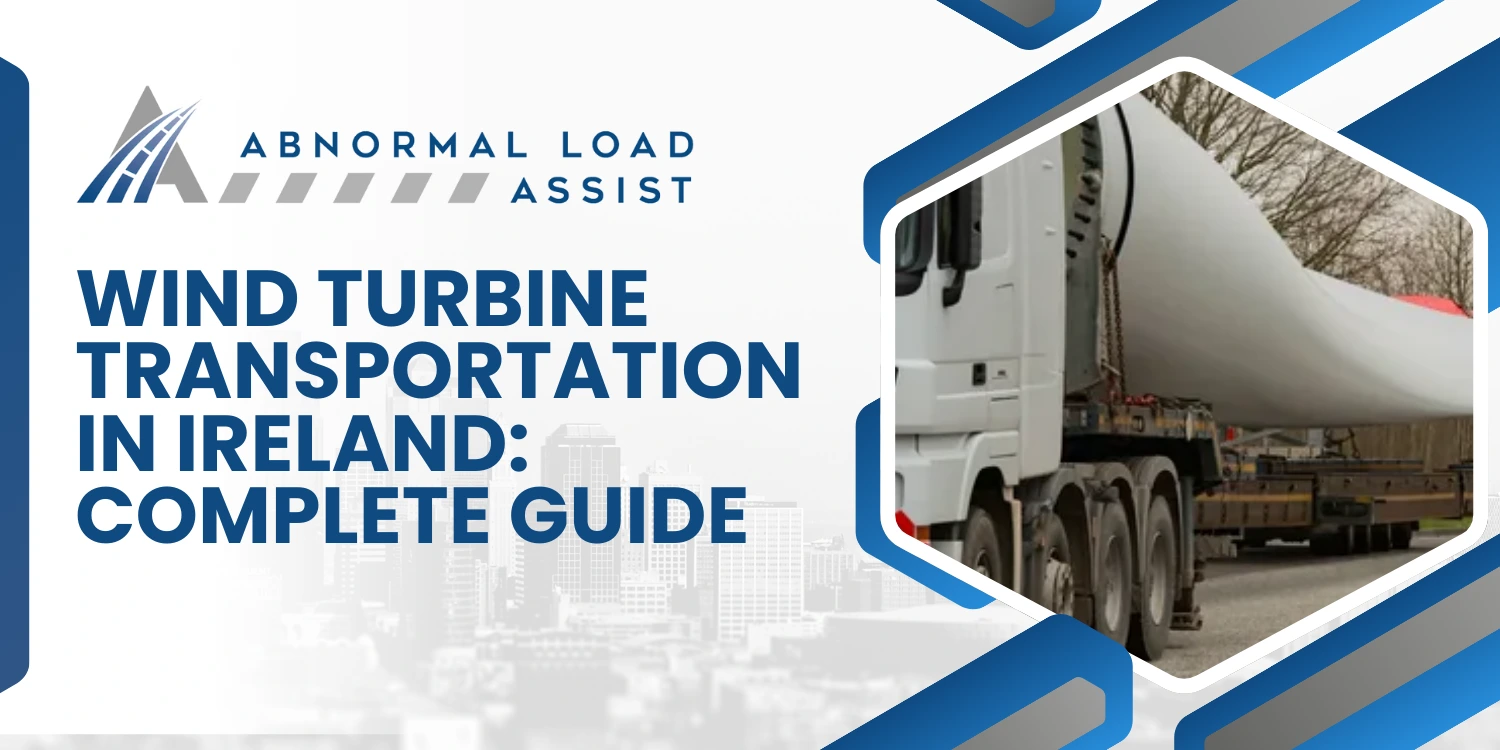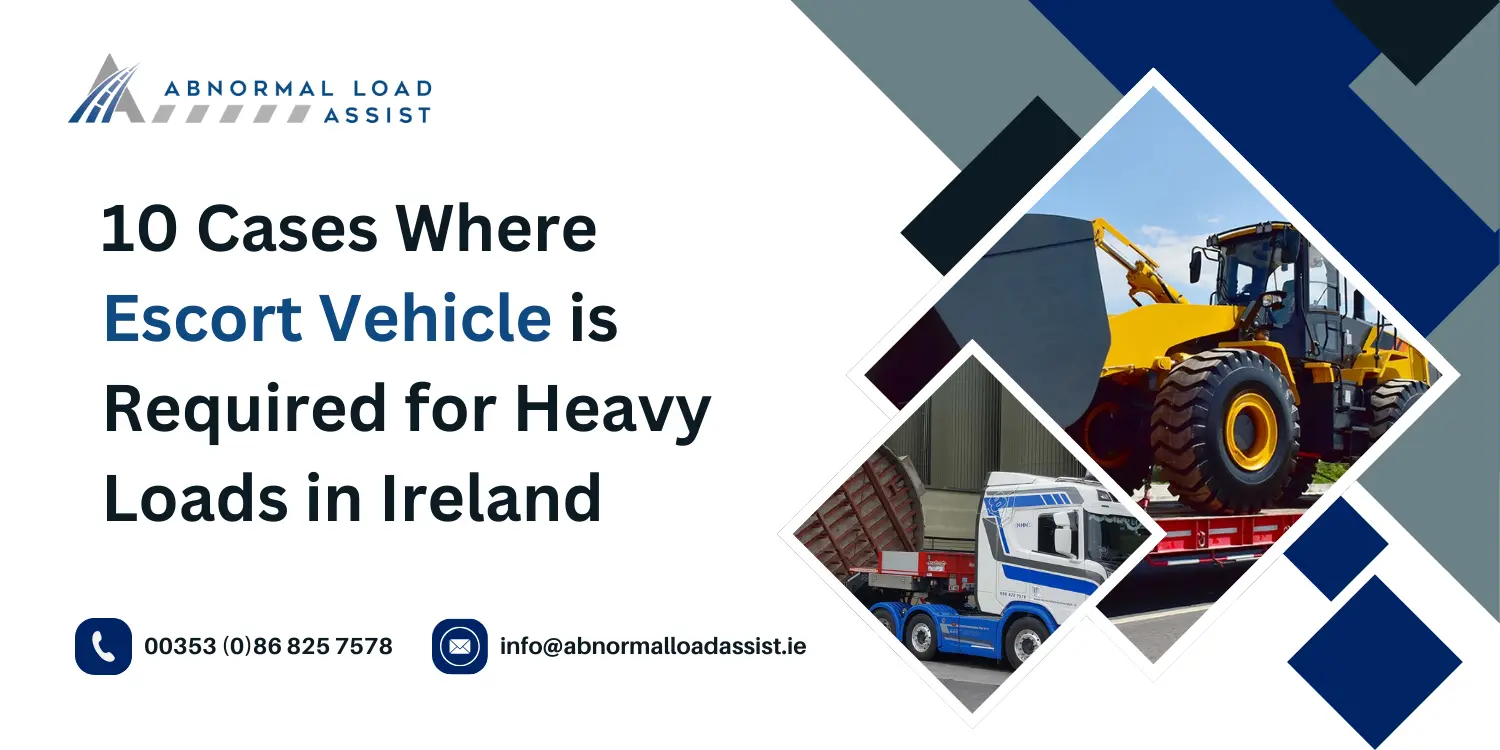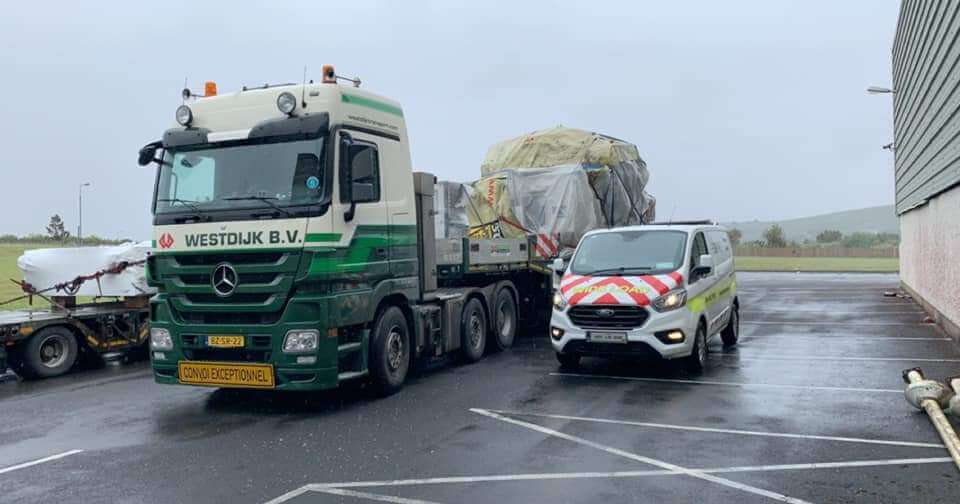Transporting wide and heavy loads is a crucial aspect of infrastructure development, particularly in the…

What is Pilot Vehicle? Importance in Heavy Haulage Escort
Transporting heavy or oversized loads requires meticulous planning and execution. This is where pilot vehicles come into play. These specialized escort vehicles are essential to ensuring the safe transport of abnormal loads on roads.
What is a Pilot Vehicle?
A pilot vehicle, also known as an escort vehicle, is vital in the transportation of oversized and abnormal loads. These vehicles serve to guide and safeguard the transport of heavy, wide, or high loads on public roads. They play a crucial role in road safety escort tasks.
Equipped with distinctive features such as flashing lights and clear signage, pilot vehicles alert other road users to the presence of oversized loads. They ensure other drivers are aware and cautious, minimizing the risk of accidents.
When are Pilot Vehicles Required?
Pilot vehicles are necessary when transporting oversized loads that exceed standard dimension or weight limits. Regulations vary by region, but typically when loads are exceptionally wide, long, or tall, the law mandates their use. Such loads could include industrial machinery, large construction materials, or parts like wind turbine blades.
These escorts are crucial during abnormal load transport to navigate safely through tight or restricted areas. Particularly in urban settings, where tight turns and low bridges pose significant challenges, pilot vehicles become indispensable.
Types of Pilot Vehicles & Their Functions
Pilot vehicles play varied roles depending on their position and purpose. Each type is equipped to handle specific tasks that ensure smooth logistics during oversized load convoys.
Front pilot vehicle (lead vehicle)
The front pilot vehicle, or lead vehicle, is crucial for navigating oversized loads through roads. It sets the pace and checks for oncoming traffic, ensuring that bridges, curves, and intersections are manageable.
It communicates with the rest of the convoy to warn about upcoming road conditions. Equipped with visible signage and warning lights, the front pilot vehicle alerts other road users of the impending wide load.
Rear pilot vehicle (trailing vehicle)
The rear pilot vehicle, known as the trailing vehicle, helps secure the convoy’s back-end. It provides wide load assistance by keeping trailing traffic at a safe distance from the oversized load.
This vehicle acts as a buffer, preventing cars from overtaking or cutting too close to the heavy haulage escort. The trailing vehicle provides crucial feedback to the lead vehicle, especially on traffic conditions and obstacles approaching from behind.
High-load escort vehicle (height clearance checker)
High-load escort vehicles specialize in monitoring height clearances to protect against obstacles like overpasses or power lines. Before transit, they perform route surveys and measure all critical heights along the transport path.
Their role involves liaising with utility companies to raise or adjust overhead fixtures if necessary. By constantly assessing the potential risks and communicating findings, they ensure the oversized load remains unhindered.
These vehicles collectively provide wide load assistance by ensuring traffic management and route safety, adapting their functions to meet different needs.
Key Responsibilities of a Pilot Vehicle Operator
Pilot vehicle operators are central to ensuring the safety and efficiency of heavy haulage escorts. Their role requires keen attention to detail and excellent communication skills.
They are trained to anticipate and handle various challenges that can arise during transport.
Route navigation & hazard identification
Navigating the route effectively is crucial for a pilot vehicle operator. They need to identify potential hazards such as sharp turns or narrow lanes. By conducting thorough route surveys, operators can anticipate these challenges.
This proactive approach helps avoid delays and accidents. Using GPS and route maps, operators ensure that the convoy follows the safest path. This careful planning is essential in avoiding unexpected obstacles and minimizing risks. By identifying and mitigating hazards early, they maintain the convoy’s safety and efficiency.
Communicating with the haulage team
Effective communication with the haulage team is vital for pilot vehicle operators. They use radios and real-time communication systems to relay critical information.
This includes updates on road conditions and upcoming route changes. Consistent communication ensures all team members are aligned and can coordinate maneuvers smoothly.
Ensuring public safety and traffic control
Operators play a crucial role in public safety during oversized load transport. They signal other road users with warning lights and clear signage. This visibility alerts drivers to the presence of slow-moving, wide loads.
Operators assist in managing traffic by instructing vehicles to slow down or stop if necessary. Their actions help prevent accidents and ensure a smooth traffic flow.
Importance of Pilot Vehicles in Heavy Haulage Escort
Pilot vehicles are integral to the safe and efficient movement of heavy and oversized loads. They serve as the first line of defence against potential road hazards.
Preventing accidents and road hazards
One of the key functions of pilot vehicles is accident prevention. By providing advanced warning to other road users, they help avoid collisions. The vehicle’s clear signage and warning lights alert drivers to potential dangers.
This proactive approach reduces the chance of accidents involving wide or slow-moving loads. Moreover, pilot vehicle operators continuously monitor road conditions, quickly identifying and mitigating hazards. They act as a buffer, allowing time for other drivers to adapt to changes. This foresight is critical in maintaining safe distances and avoiding sudden stops.
Managing traffic flow during transport
Managing traffic flow is another critical responsibility of pilot vehicles. They help maintain a steady pace for oversized load convoys. By coordinating with local traffic authorities, they ensure minimal disruption. Pilot vehicles often guide convoys through high-density traffic areas, using designated routes that optimize flow.
They also facilitate lane changes and assist with merging. This strategic approach minimizes traffic snarls and maintains order on the roads. Proper traffic management also ensures compliance with traffic regulations, contributing to a safer travel experience for all road users.
Navigating restricted areas and roadblocks
Navigating restricted areas and roadblocks is a crucial task for pilot vehicles. They survey routes in advance to identify potential obstacles. Pilot vehicles check for height clearances, weight limits, and road closures. By doing so, they prevent the convoy from encountering impassable sections.
This foresight ensures that the load takes the optimal path. Pilot vehicles coordinate with local authorities to secure necessary permits for restricted zones. Their expertise in route selection helps avoid delays and maintain the convoy’s schedule. This careful navigation is essential for the successful transit of oversized loads.
Equipment & Features of a Pilot Vehicle
Pilot vehicles are equipped with specialized tools to enhance their role in heavy haulage escort. These tools are essential for managing both planned routes and unexpected challenges.
Signage and warning lights
Clear signage and warning lights are vital features of a pilot vehicle. Signs display essential information about the load dimensions and convoy status. Bright, flashing lights ensure that the vehicle is visible from a distance.
They alert other drivers to slow-moving or oversized loads, reducing the risk of accidents. Effective signage and lighting are key to maintaining awareness and safety on the road.
Communication systems (radios, GPS tracking)
Communication systems are central to the coordination efforts of pilot vehicles. Radios allow for real-time communication with the haulage team and other pilot vehicles. GPS tracking systems provide live updates on the convoy’s position and progress.
These technologies ensure that all parties are informed about route changes and road conditions. Efficient communication helps synchronize the escort process and manage any arising issues.
Tools for measuring road clearance
Road clearance tools are essential for assessing the path of travel. Pilot vehicles use these tools to measure overhead obstacles and road width. Laser measuring devices and clearance poles are commonly employed.
These tools help ensure that the load can safely pass through narrow or low-clearance sections. Precise measurement prevents damage to both the convoy and infrastructure, ensuring a smooth journey for oversized loads.
How to Hire a Pilot Vehicle for Heavy Load Escort?
Hiring a pilot vehicle for heavy loads starts with choosing a reliable escort service that understands route planning, safety regulations, and traffic management.
At Abnormal Load Assist, we offer expert pilot vehicle services for construction equipment, wind turbine components, and other oversized loads. Our fully trained team ensures compliance, safety, and smooth transport across Ireland and Northern Ireland.
Contact us today to discuss your escorting needs!
Conclusion
Pilot vehicles play a crucial role in the transport of oversized and heavy loads. Their importance cannot be overstated, as they facilitate the smooth and safe movement of abnormal loads, reflecting their vital contribution to logistics and transport safety.
Don’t take risks with oversized loads—book pilot vehicle today!



